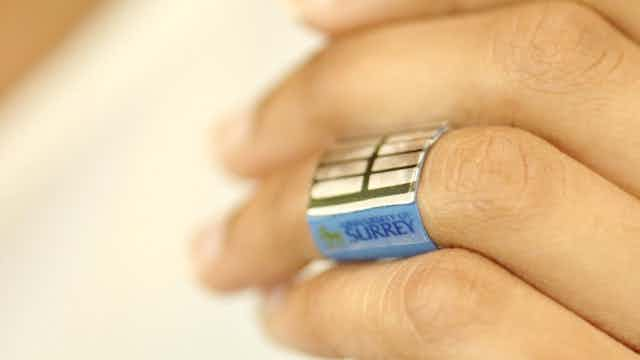X-rays could be about to change. Since its discovery at the end of the 19th century, the radiation has provided a window into the inner workings of the body, and later gave us the power to “see” inside everything from buildings to suitcases. But the technology has remained in principle the same: the rays are fired through whatever object is being inspected onto a fixed, rigid and usually small detector that can produce the desired image.
But X-rays could be much more flexible in future. New technology means that X-ray detectors could one day effectively be printed onto any suitable surface. So they could be made curved to wrap around the part of the patient’s body being scanned to produce a much more accurate image. They could be large enough to scan an entire truck in one go. And they could be portable enough to quickly carry through a crowd to inspect a suspicious package. And this future is now a step closer thanks to a recent advance that my colleagues and I have made.
Today, many X-ray images are created by firing the rays onto a digital detector rather than photographic film. These detectors convert the X-rays into electrical charges and a computer converts these into a digital image. Many industries have benefitted from this massive leap from X-ray film because it has enabled the creation of more detailed images that can be viewed in real time. But the solid detectors are also rigid and flat and so limited.
By contrast, the human body naturally consists of curved surfaces. And firing X-rays through a curved object onto a flat detector can cause errors. This can lead to a cancer misdiagnosis or a patient being given the wrong dose of radiotherapy. Overexposing someone to X-rays can also cause tissue damage and even the growth of secondary tumours.
Because current X-ray detectors are mostly made from thick slabs of inorganic material, they are expensive to make in large sizes for scanning large objects such as vehicles. Some detectors also require very high voltages to operate and so would’t be suitable for portable applications.
For inspecting manufactured parts and products for defects (known as non-destrutive testing), traditional X-ray films are still commonly used to capture images because they are cheaper than digital detectors. But these films need to be processed in a special lab so they can’t provide the real-time images that digital detectors can.
Flexible detectors
All these applications would benefit from the creation of more flexible digital X-ray detectors. And it looks as if there might finally be a solution. In 2017, researchers demonstrated the world’s first curved plastic X-ray imager. And now, my colleagues and I have developed a way to create detectors using a special ink that can be deposited on a surface to create an X-ray sensitive film.
The ink contains nanoparticles that can stop the incoming X-rays and generate an electrical charge, and organic material that carries the charge to a set of electrodes. It can be coated or printed onto any suitable surface of any size and only needs to be several micrometers thick, less than a sheet of paper.
As a result, it is now possible to create large, flexible X-ray detectors powered using only a couple of coin cell batteries. Alternatively, we could create portable X-ray detectors that, coupled with portable X-ray sources, could fit into ambulances and be used to make diagnoses on the road and not just in hospitals. And improving the resolution of the images could allow the technology to be used for detecting cancer.
Researchers are also working to create detectors that can work with lower X-ray doses, to minimise the amount of radiation that patients and operators are exposed to. This will require identifying materials that are more sensitive to X-rays so that a better response can be achieved with a lower dose. This technology has such exciting potential to revolutionise current imaging techniques and where this would take us is only limited by our imagination.

